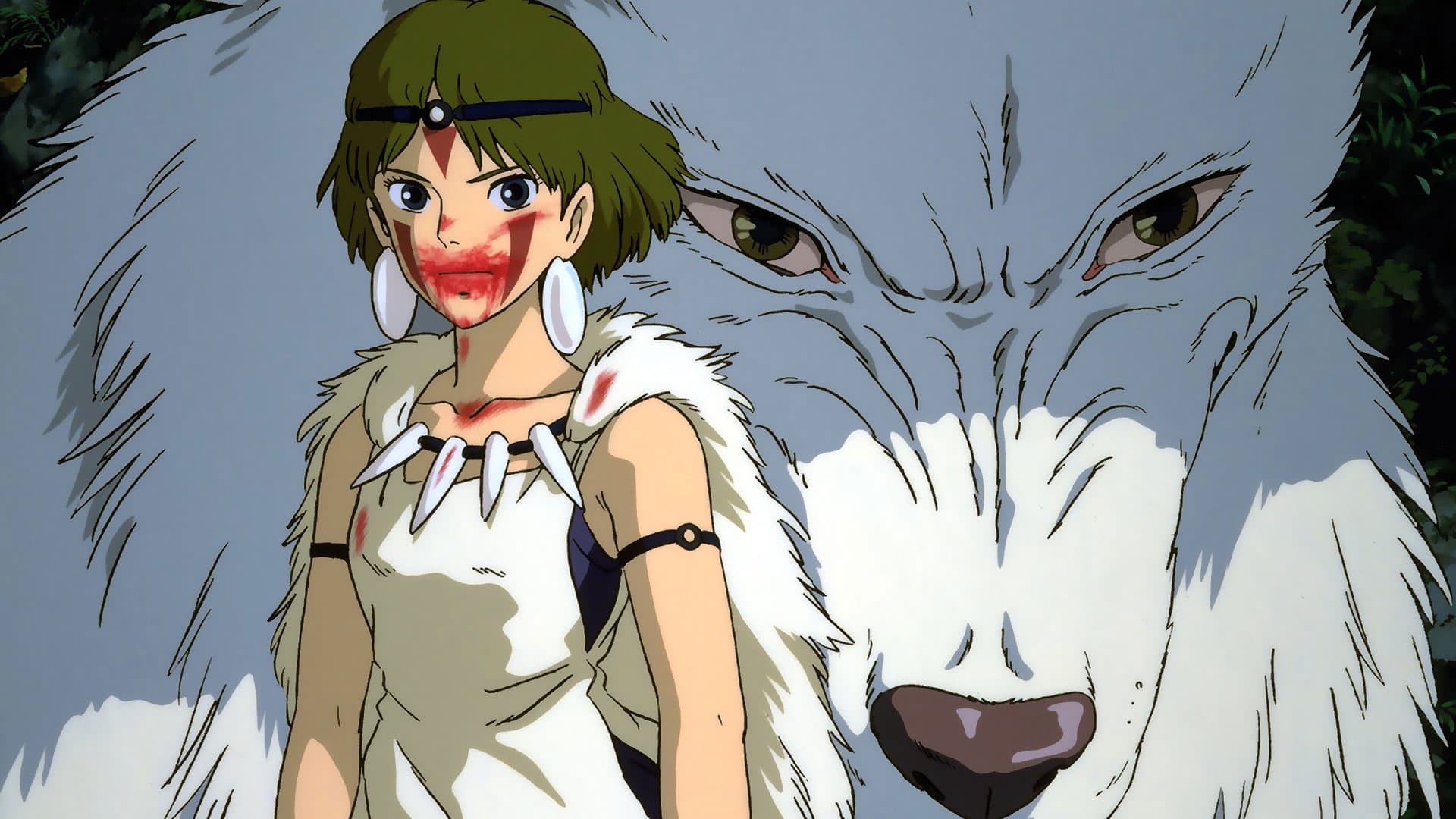

Princess Mononoke – Love at forest sight
Welcome to our Reference Degustation where we take you through a 5 course menu of Miyazaki masterpieces. Third course: Princess Mononoke. Hold onto your jewel daggers because your ex is about to stab you in the heart.
Hosted by KT & Oti
Film Critics & Hosts
Listen on your favorite platform
Now Playing
For Your Reference Podcast
Welcome to our Reference Degustation where we take you through a 5 course menu of Miyazaki masterpieces. Third course: Princess Mononoke. Hold onto your jewel daggers because your ex is about to stab you in the heart.
Stats
Director: Hayao Miyazaki
Music Composed By: Joe Hisaishi
Adapted to English: Neil Gaiman
Budget: JPY2,400,000,000
Worldwide Gross: $162,112,497
Themes/Tasting Notes
- Planes/Flying: Miyazaki was sick of people pointing out this theme to him so he deliberately left it out.
- Anti War: Not in the aspects covered in Porco Rosso but there are definitely elements with Anti War between the humans and the animals. We see this through the introduction of guns. There are better ways of finding peace. This film excelled in it’s refinement, if you pardon the iron.
- Environment: The conflict that exists is applicable even to today. How we treat the forest and environmental concerns. Miyazaki used to visit a blacksmith as a kid and was inspired by the craftsmenship. However when he discovered the resources required to do this, it contributed to his inspiration to create this film.
- Female lead/kids: San has to be tough and stand strong against the persecution from other animals. Single willed conviction to kill Lady Eboshi. She is dedicated and one of the strongest characters in a Miyazaki film.
- Ambiguity between good/evil: Perfect example is Lady Eboshi. On one hand she is destroying the forest but on the other hand she is giving people hope and purpose. People that are usually discarded by society. Eboshi had layers to her and was less moustache twirling than Yubaba in Spirited Away. She is a person and to be a person is to be flawed.
- Pigs: We got some stupid pigs. The opening scene focuses on Ashitaka being cursed by the boar. They had a goal and that’s all they focused on. Okkoto sacrificed his brothers and sisters in focus of that goal. They all drank the pig-aid.
- Whimsical/Fantasy: Not completely. The deer god could be considered fantasy if mythology is fantasy. There are devices set in a fantasical sort of nature that are used to convery messages. Real world, environmental messages.
Breakdown and Analysis
- The team couldn’t find a word to replace Mononoke so kept it as is. We have suggestions as the Red Wing Warrior Princess.
- One of the producers was worried about being able to keep the runtime succinct but Miyazaki assured he would be able to wrangle the story in.
- Part of this film drew inspiration by a graphic novel by Miyazaki called The Journey of Shuna.
- There are a lot of dark themes in this film. Once he covered Porco Rosso, Miyazaki couldn’t go back to Kiki’s Delivery Service.
- Lady Eboshi’s character and her resolve was a bit too clean. She stirs a lot in regards to humanity. You think you are San but you are really Lady Eboshi.
- Aside form the humans, there are graces to be given to all parties. Yes humans will continue to take advantage of nature to progress into a metropolitan society.
- Ashitaka is a player without a prayer. He had a sweetheart, Kaua that gifts her beloved jewel dagger. He saw that wolf pussy and he was not looking back. He seemed like the sort of guy that you want in your turn for protection and he can always fuck you by dinnertime. He ended leaving his Jennifer Garner. He clearly doesn’t care about Kaya because he never went back to the village. He stays in Ironworks and beckons on San’s red wing calls.
- Jiko was as dumb as Okkoto. Trying to run up that hill in his precarious robe.
- Miyazaki didn’t want the leader of the Ironworks to be a man because it would be boring.
- This film tackles more heavier subject matter, it was deliberate to not visible have kids in the town because he didn’t want to show that the town was in it’s settling phase.
- Only film set in feudal Japan and Yakul was not a horse to avoid confusion as Ashitaka was not a samurai.
- Animals in this film we have Apes, Wolves (Moro) and Boars (Okkoto).
- It was interesting if you think about evolution, apes are the genesis to our existence. And that’s how KT partook in how they were feeling and how they wanted to respond to the humans. They were speaking very simply. We plant trees. Humans destory them. We eat the humans, we grow stronger. We kill the humans. It was a pragmatic approach to their problem. We’re minding our business building our nature and these humans are disrupting that. They lost a lot of power they might have had in a previous life. It was sad, they are the only ones trying to restore nature. When Ashitaka first comes to the Ironworks it was mentioned in passing how they were effecting by deforestation.
- Okkoto is not bad, he is dumb. Is that worse? Oti would say so. Okkoto was focused to his own detriment. Brute force is what got him to lead the pack. He knew if he held onto resentment that he would become a vengeful spirit, but that didn’t stop him from succumbing to it. But when you have been mistreated for so long it’s not completely baffling as to why he succumbed to that. If Okkoto and Moro were to live they would not be able to live in peace that was definitely earned. They had suffered too much to exist in that peace. What Okkoto thought was more important than what was real. He had a noble intention of wanting his brothers and sisters to be healed.
- Spells can be on the extended Reference Degustation theme pack as they are prevalent in this film as well. You have a visual of the hentai baby worms coming all over you which symbolises succumbing to complete hatred. KT Miyazaki will get her writer’s credit on all films in this Reference Degustation and Naruto.
- The ending was a bit too resolute. Neil Gaiman mentioned he would have made it more resolute with San and Ashitaka.
- The deer god has all the powers in the world. He felt like a Christian god to KT. He was all knowing and omniscent but he didn’t exist. This film, thematically, made KT wonder why people believe in a deer god or something similar. The deer god did more for Ashitaka than he did for any of the animals. If KT can take her cynical mortal coils, she enjoyed the ending. Appreciated how it tied the film together. From humans are bad to not necessarily so.
- Jiko had more upskirts than Nausicaa.
- San was a bad ass bitch that minded her own business. She needed to ride the dick every now and then but that’s what men are good for. Right ladies?
- San knew she was human but her hatred for human stopped her from living amongst them. We can all be Jane Goodall. KT is Naivasha Mononoke.
Unrelated but vital points
- Sad what is happening to American Gods.
- The world was not ready for Kaya’s toes or San to say the N word.
- Totoro merchandising was so successful they included him in the Studio Ghibli logo
- Youji, who plays Ashitaka also played Asbel in Nausicaa.
- Sumi, who plays Toki also played Nausicaa.
- Miwa, who plays Moro also plays Witch of the waste in Howl’s Moving Castle.
- Oti’s alter ego is Quentin Jerome Tarantino. Oti brings a unique spice to For Your Reference. He is from a different spice of reference.
- Sometimes it’s nice for creatives to leave it open. If you give enough breadcrumbs, Hansel Oti and Gretel KT will find their way to Sploosh Mountain.
- KT moonlights as a journalist on 60 minutes.
- You know when you go to a fancy restaurant with a small bowl of water and a lemon to wash your hands, at For Your Reference our bowl has Oti’s fluids.
- Boars are wild pigs. From Oti’s mouth to your eyes.
- Oti and KT are nothing but mammals.
- Oti is the 2017 Mbouc.
- Let us know if you are interested in an Oti Miyazaki joint.
Episode Details


Related Episodes
The Beast in Me – Jekyll & Snide
December 2, 2025
100m, Bugonia, If I Had Legs I’d Kick You & Predator: Badlands
November 11, 2025
Dreaming Whilst Black – How Much A Dollar Cost
November 5, 2025